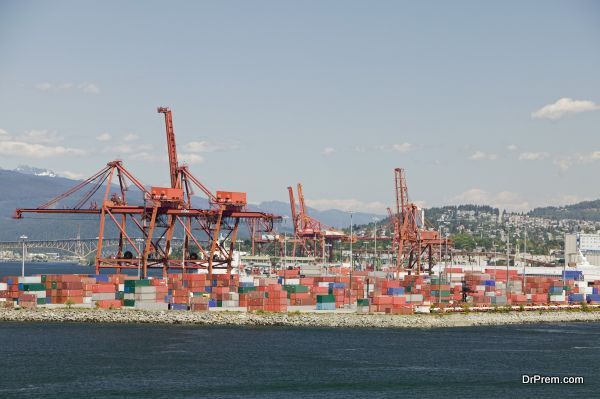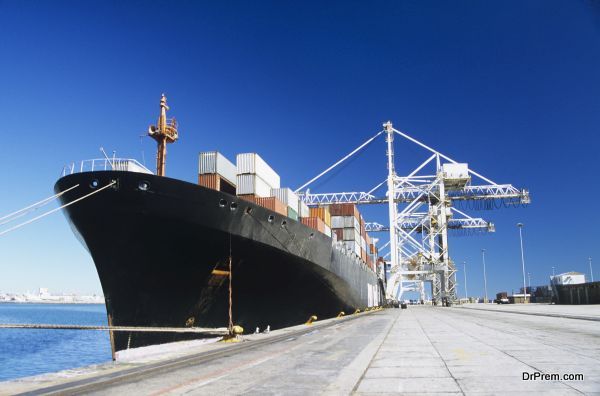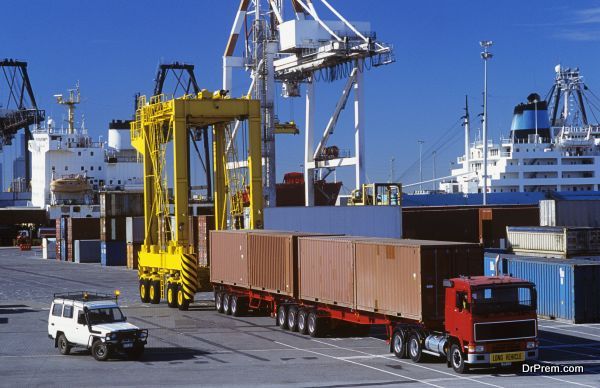Of all the worries the world has had, climate change has been the most serious in the last decade. With new reports of an impending doom and new signs showing the magnitude of damage done, it is time to sit back and rethink the technology and think up some new means of curbing greenhouse gases. The shipping industry in itself is a large factor in the gigantic carbon emissions that take place over the world.
Why and how?
 There are over 50000 commercial ships that carry cargo and people all over the world. With the massive carbon emissions from them, they are as polluting an agent as the aircraft. Sadly though, till date we had no such rule or regulation curbing carbon emissions from ships and this was high time.
There are over 50000 commercial ships that carry cargo and people all over the world. With the massive carbon emissions from them, they are as polluting an agent as the aircraft. Sadly though, till date we had no such rule or regulation curbing carbon emissions from ships and this was high time.
Recently, the historic meeting took place in London where after much deliberations and discussions the International Maritime Organization came to the conclusion that by 2050 these carbon emissions would be drastically reduced. All the 170 member states of the IMO are party to this decision and it is binding.
Present situation: Shipping accounts for over 80% of all global trade that takes place and has been a massive source of pollution for many years now. One of the primary reasons for such levels of pollution is that the ships use heavy fuel forms. There is an urgent need for them to be replaced by eco friendly alternatives like solar energy or even the controversial nuclear energy.
Currently, some ships use a form of dirty carbon as fuel and although this practice is banned in many countries, it still is practiced by large numbers of ship and results in massive gas emission from global shipping.
The process by which shipping industry to reduce carbon emissions drastically by 2050

- Some low tech solutions: Often deeper problems like climate change have the simplest of solutions. The problem was that till date the shipping industry never really bothered about curbing greenhouse gases with a high availability of cheap and heavy fuel like dirty diesel. Even the simplest changes that would be more fuel efficient like low friction hull coatings or the recovery of waste heat were never really given much thought. These simple solutions can be deeply impactful if we consider carbon emissions.
- Slender ship designs: This is a smart move by the shipping industry to reduce carbon emissions by 2050. A ship that is slender and slim implies that it requires a lot less fuel to get moving. Naturally, the emission levels from such ships are much lesser.The only drawback behind this idea is that the current global fat fleet of ships is on an average 25 years of age. Now the change of these ships is no overnight affair and we cannot expect major changes happening in this domain before 2030. Till then, however, we can look towards better options such as certain modifications in the existing fleet that leads to curbing greenhouse gases.
Some technical modifications that could potentially reduce emissions:

- Fitting bulbous extension: The ships’ bows can be fitted by a bulbous extension under the water line. This step if taken correctly reduces drag so much so that emissions can be reduced by up to 2-7%.
- Air lubrication: As per this system, the compressed air is pumped under the hull. This results into a carpet of bubbles and apart from that this also reduces drag. This has the potential to curb emissions by 3% more and is surely a smart move to adopt.
- Cleaning and painting: the hulls can be easily cleaned and repainted. If such is done, using some kind of low friction coating then the results would cause wonders. Emissions for instance would drop by up to 5%.
- Replacing propellers: Gas emission by global shipping can be checked to a large extent if the propellers are replaced by using two which would rotate in opposite directions. This slipstreams energy and the resulting impact would be about a 8-15% efficiency gains. If climate is too scary then well, the solutions are simple.
- Banning of the conventional fuel forms: Like we have already told you the main reasons for such massive amounts of emission is usually the poor quality of petroleum fuel that is being used. What immediately needs to be done thus is to find a good enough replacement for such fuel. Clearly the usage of continued low grade petroleum would do nothing to prevent the climate change. So some alternatives like the nuclear fuel or bio fuel or solar fuel need to be seriously looked. There are such ships existing around the world and if these ships can there is no good reason as to why other ships wouldn’t.
- A new fleet: It is difficult to change the entire situation with the same old fleet of ships. While temporary arrangements can be made, you must consider the fact that new ships have to take over the scene. These new ships will be slimmer and trimmer as per the demands and will also comply with all energy guidelines laid out. They will have the best of low emission engines and most would be so built that they can be easily used to run by other alternative and healthier forms of fuel.
- Must abide: It is one thing to have a law and quite another to abide by it. The IMO must see to it that their laws and regulations are abided by and adopted by all ships. Irregularities must be severely punished.
Final words
The decision taken by the shipping industry to reduce carbon emissions drastically by 2050 is welcome news for humanity and the world and we told you why. Often a large damage is addressed by small steps towards a positive direction and this clearly has been one such incident. We hope this is only the beginning of very positive signs ahead on this road.
Save the planet; this is the only home you have!



